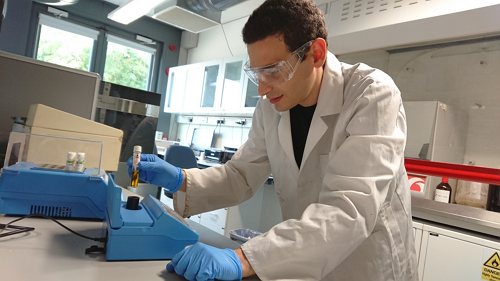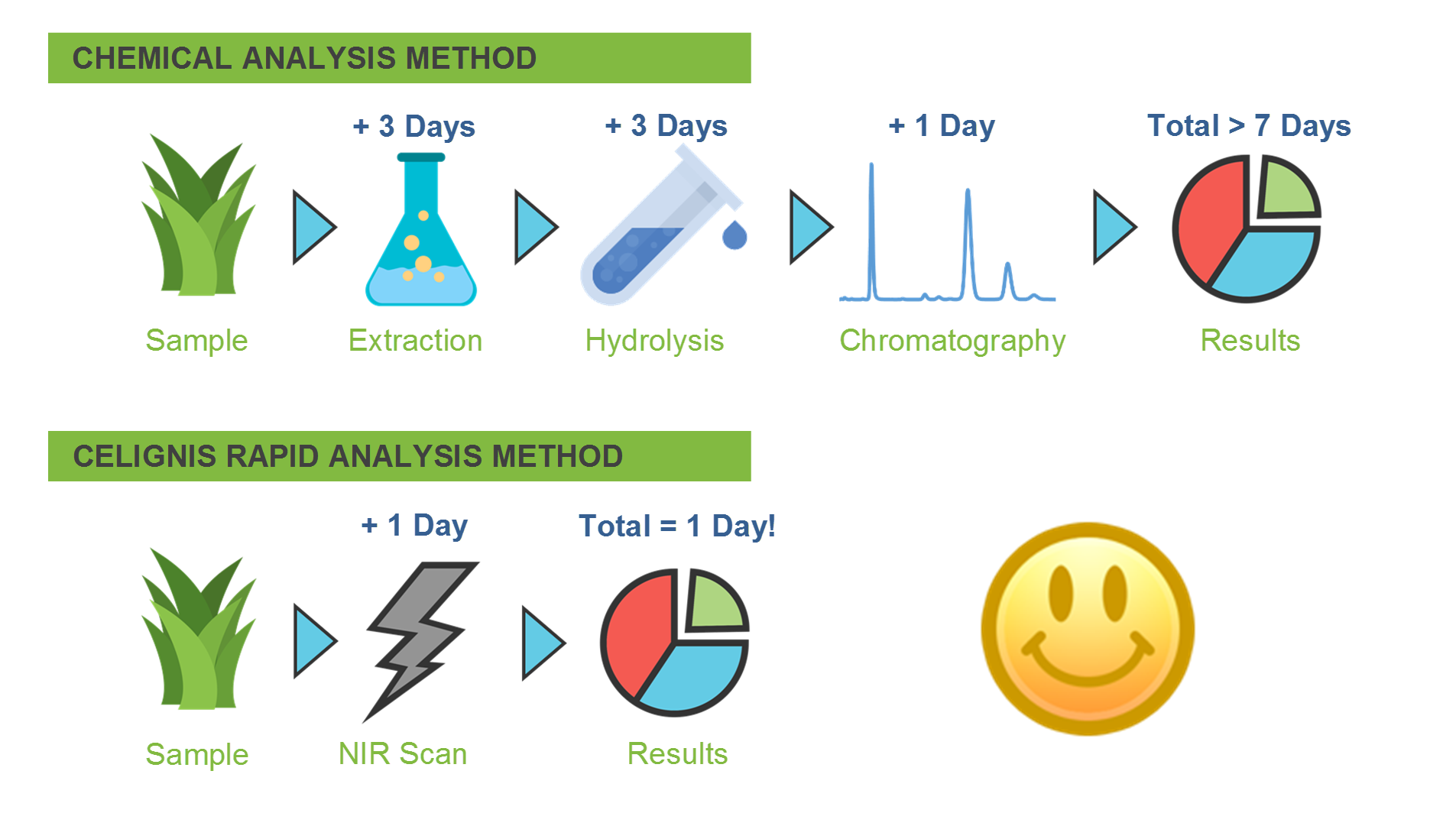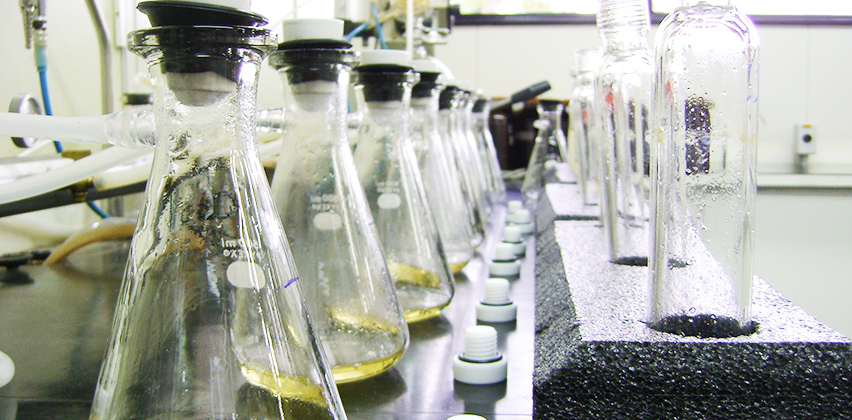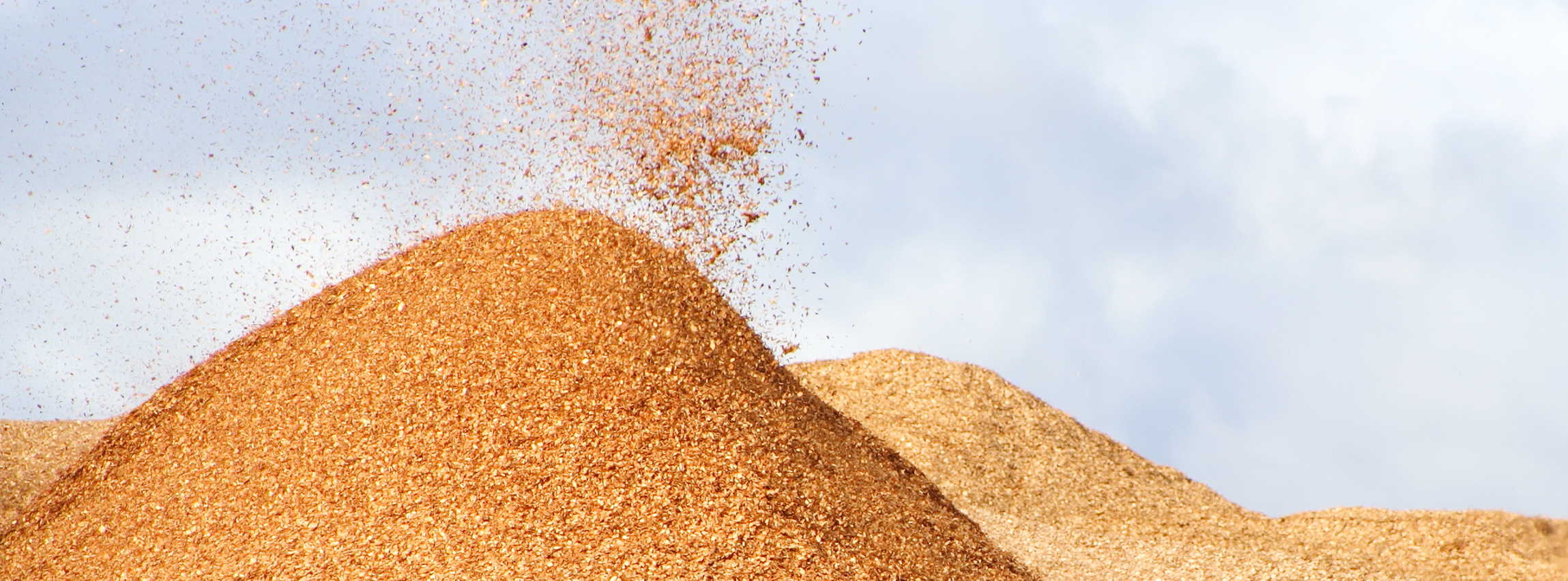
Biomass Analysis at Celignis
We are a dedicated biomass analysis laboratory that provides our clients with the most precise data to allow them to make the best use of their biomass feedstocks and optimise their biomass conversion processes.
Our personnel have signficant experience (e.g. PhD, MSc, BSc) in biomass-related disciplines and our founder Dr Dan Hayes has a number of peer-reviewed publications and chapters concerning the analysis of biomass and biorefining.
During his time as a researcher Dr Hayes found that feedstock composition was crucial, but that literature data could be highly misleading. There was a critical need for accurate analysis. This led to the formation of Celignis. We are driven to provide the best possible data and want to play our part in the development of the bioeconomy.
Our biomass analysis methods cover a number of key areas, as detailed below:
Lignocellulosic Constituents
We can help to determine the value of your feedstock for the production of advanced biofuels. We determine sugars in cellulose and hemicellulose, as well as lignin, extractives, and ash.Click here to read more on the chemistry of lignocellulose and here to see our analysis packages for lignocellulosic biomass.
We also have significant experience in the analysis of biomass samples from a range of pre-treatment technologies and other biomass conversion processes. We have a set of recommended analysis packages that will help you to get the most detailed data about the whole conversion process.

Rapid NIR Biomass Analysis
As an alternative to our chemical analysis packages you can get your solid biomass samples analysed using our unique rapid-analysis Near Infrared (NIR) method. This involves us scanning your sample and then applying our proprietary algorithms to predict the content of 13 different lignocellulosic parameters. This means that we can provide you with data within one day at low cost. No other company is able to provide this service for advanced biofuel feedstocks. Click here to read more about our rapid NIR analysis method.
Analysis of Process Liquids
Many of the various technologies that exist for the production of advanced biofuels produce liquid outputs, either from the primary conversion process or from the pre-treatment stage.At Celignis we offer a number of analysis packages to characterise these liquids. For instance, we can analyse the free sugars, including uronic acids, in solution as well as the amounts of each sugar that are tied up in oligomers.
We can also determine the amounts of sugar degradation products (such as levulinic acid, formic acid, furfural, and hydroxymethylfurfural) that are present in solution. There is also an analysis package available for the carbohydrates present in the water extracts of biomass.
Click here for more information on the analysis of pre-treatment liquids and here for more information on the analysis of sugar degradation products.

Bioenergy Parameters
If you are considering producing heat or electricity from biomass, then we offer analysis packages that will suit your requirements. Our laboratory is equipped with a number of state-of-the art items of equipment that allow us to determine the most important combustion-related properties of your biomass including calorific value, volatile matter, elemental composition, and moisture content.We recognise that it is important that you have confidence in the analytical data that you receive. That is why we follow internationally-recognised standard analysis methods and undertake all analyses in duplicate, reporting values for each of the replicates analysed, along with the average and the standard deviation. This allows us to repeat the analysis (at no extra charge) if the deviation values are high.
Moisture and ash contents are of crucial importance for combustion. This is reflected in our online, Excel, and pdf reports where all data for bioenergy-related parameters are expressed on dry-mass, as-received, and dry-ash free bases, according to standard method EN 15296:2011.
Click here to see our analysis packages for combustion properties of biomass.

Physical Properties
The physical composition of biomass is important when determining how it can be stored and transported. We provide a number of analytical services to help you understand your feedstock better. Some of these services are listed below:Particle Size - Our lab is equipped with a Retsch AS 400 sieve shaker. It can accommodate sieves of up to 40 cm diameter, corresponding to a surface area of 1256 square centimetres. This allows us to determine the particle size distribution of a range of samples, including wood chips, by following standard methods EN 15149- 1:2010 and EN 15149-2:2010.
Density - Bulk density is an important parameter when considering the transport of biomass and, together with the net calorific value, it determines the energy density. We determine bulk density using ISO standard 17828:2015 with a 5 litre container (certified to EN 10204-3.1).
Pellet Properties - Pellets that have lengths and diameters that are outside of the specified limits can cause transportation problems in screw conveyors, silo outlets, and burner feeding systems. We can help you quickly identify and avoid such issues by determining the length and diameter of your pellets according to standard method EN 17829:2015.

Seaweed Analysis
Seaweed has been recognised as a potential third-generation biomass feedstock. Its commercial utilisation, however, is not without challenges. In particular, the composition of seaweed can be much more complex and diverse than many of the traditional lignocellulosic feedstocks. Fortunately, with our in-house developed ion chromatography methods we can allow you to see the potential value that seaweed samples may have for a chosen biomass conversion process.We are able to quantify all of the important aldoses (e.g. glucose, mannose etc.) and deoxy-sugars (fucose and rhamnose) present in seaweed as well as five uronic acids (mannuronic acid, guluronic acid, glucuronic acid, 4-O-Methyl-D-Glucuronic Acid, and galacturonic acid) and mannitol.
Click here to read more about our seaweed analysis methods.

Videos on our Analysis Methods
Further Information
Click on the links below to learn more about Celignis.- Our history.
- Our team.
- Biomass research Activities.
- Examples of biomass feedstocks we have analysed.
Sign-up to our Newsletter for 10% Off Your First Order!
Celignis periodically issues newsletters that detail recent developments at the company, special offers, and the addition of extra analytical services to our range.As a limited-time offer, new customers that sign-up to our newsletter will get 10% off the price of their first order with us. If you would like to register please enter your email address in the form provided below:
Email added to list. If you don't receive a confirmation email check your spam folder and add Celignis as a trusted sender.





